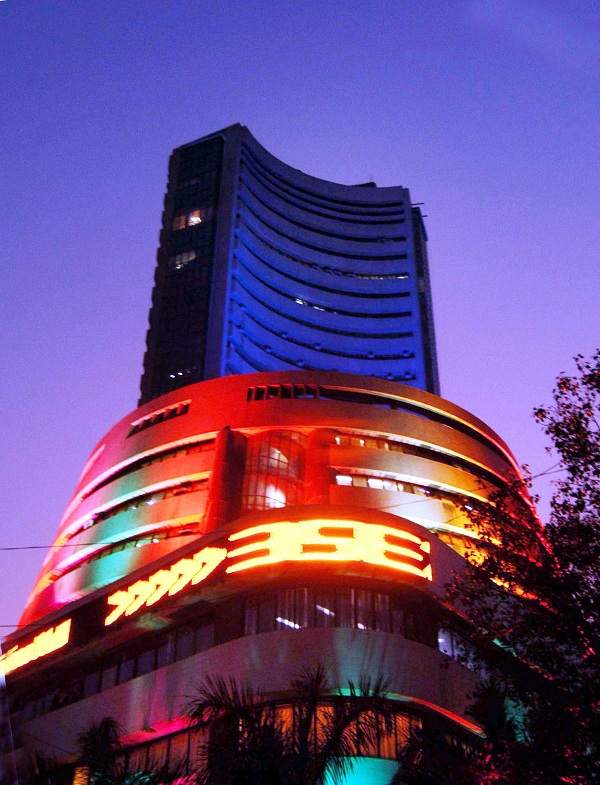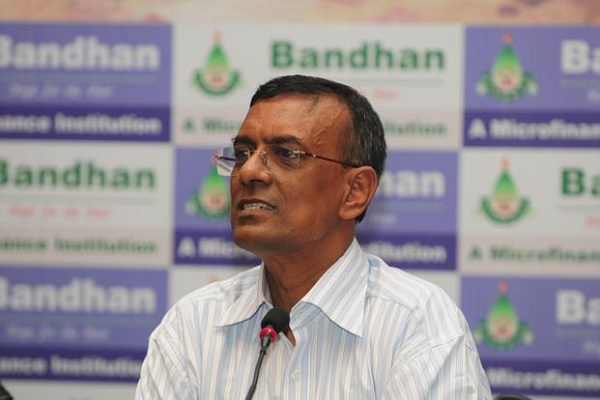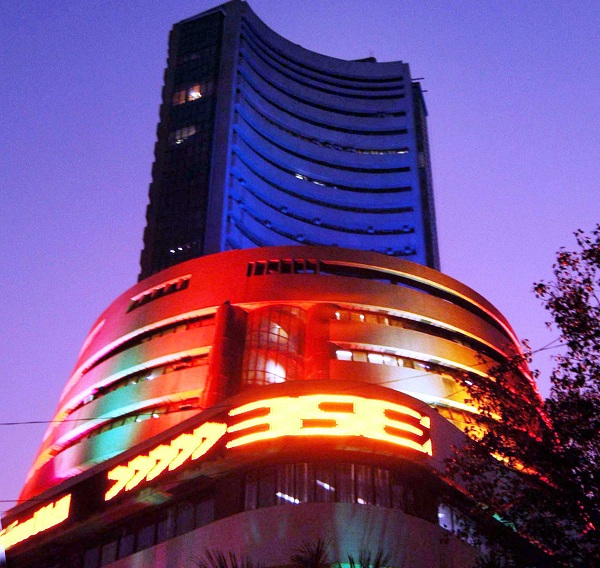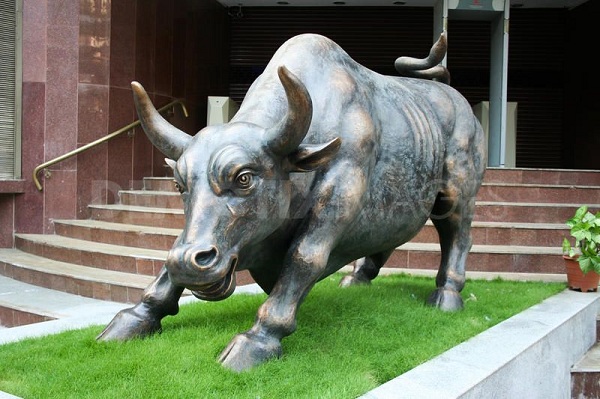
by admin | May 25, 2021 | Opinions

Bombay Stock Exchange
By Vatsal Srivastava
It’s like 2008 again. But during such times, it is important to remember that there was a March 2009.
Looking at the price action yesterday (Aug 24) , particularly during the US session, where the Dow tumbled by almost 1,000 points (although the closing was not so bad) and the wild moves in currencies, especially the euro and the yen, there surely looks to be more pain ahead for the financial markets.
After almost two decades since the Asian crisis, it is the emerging market space, especially China, which is dictating markets in the developed world. Emerging market currencies are near ‘crisis valuations’ against the dollar while the Dollar Index is getting hammered as US 10-year yields trade at two percent, implying that a September Fed liftoff is certainly off the table.
What is even scarier is the fact that the recent sell-off across global equities has also been built upon a global growth scare. So, even if China launches a huge stimulus package, a sharp rebound will most likely be sold into. The RBI, unlike its western counterparts, who are already in QE mode and at the zero-bound, has sufficient ammunition to stabilise the free fall in the Indian markets.
It took capitulation in the financial markets for RBI Governor Raghuram Rajan to come out and finally sound slightly dovish and admit that interest rates should fall further in the current macro environment. He also reiterated that our vast FX reserves could be used to defend the INR depreciation.
Although delayed, his comments on rate cuts will surely restore some sense of calm and confidence in our financial system. However, Rajan must be careful about his timing when it comes to defending the rupee. Having failed to cap the USD/INR upside at 65-66, he should let the market take rupee where it wants to till the US Fed rate hike. It is only when the market has more clarity on the Fed hike (which now seems to be in December) will the dollar strength resurge. Further, even speculators will find it hard to go aggressively short at the rupee at these levels as we cannot be clubbed together with the export oriented “tiger” economies. So, keeping the old ‘don’t fight the Fed’ rule in mind, the rupee is best left untouched as of now and should be guided by market forces alone.
Rajan may or may not agree with the easy monetary policies in the Euro zone, the US and Japan. But in crisis times, he must adapt to pick up some smart strategies from his counterparts. Like the Bernanke put, Draghi’s put or his “whatever his takes” comment and the Bank of Japan’s Kuroda put, Rajan must immediately provide the Indian economy with a ‘Rajan put’. This should of course start with a 50 basis point rate cut.
In times like these, economies and markets decouple only when policymakers take urgent steps. There is no point playing catch up with contagion.
(Vatsal Srivastava is consulting editor with IANS. The views expressed are personal. He can be reached at vatsal.sriv@gmail.com)

by admin | May 25, 2021 | Corporate, Corporate finance

Bandhan chairman and managing director Chandra Shekhar Ghosh
Kolkata:(IANS) City-headquartered Bandhan Bank on Sunday became the first universal private bank in eastern India to begin its journey post independence with 1.43 crore accounts in place and a loan book of Rs.10,500 crore backed by capital of Rs.2,570 crore.
Bank founder and managing director Chandra Sekhar Ghosh – son of a sweet shop owner in Tripura’s Bishalgarh – said its capital infusion is much higher than the Reserve Bank of India’s licensing norms which stipulate Rs.500 crore capital for new banks.
Ghosh, who in 2001 set up the microfinance firm Bandhan which has now evolved into a bank, said the capital will soon be ramped up close to Rs.3,052 crore which will translate into 44.54 percent capital to risk weighted assets ratio for the new bank.
Inaugurating the bank, union Finance Minister Arun Jaitley said: “A great institution is being born in West Bengal as Bandhan now evolves from a micro-finance institution into a regular bank. Ghosh tells me their priority is going to be the small and medium enterprises. Its a landmark initiative in the service of the country and the state.”
Already having 501 branches pan-India with 50 ATMs, Bandhan Bank plans to increase the branch count to 632 and ATM count to 250 across 27 states by the end of the current fiscal.
Ghosh, 55, said Bandhan will prioritise on giving loans to the rural unbanked people besides mid-sized regular loans, but avoid large corporate loans altogether in the initial years of its operation.
“The micro-small-medium sector in the country needs lending support and we will strive to meet their demands,” he said at the launch.
Seventy one percent of the bank’s branches will be in rural India and at least 35 percent of the total branches will be in unbanked rural pockets.
Ghosh said the bank will be operating under two divisions – microbanking and general banking – and will offer complete retail financial solutions, including a variety of savings and loan products.
The savings bank account interest rate has been fixed at 4.25 percent for balance up to Rs.1 lakh and five percent for balance above Rs.1 lakh. For term deposits, the maximum interest rate has been fixed at 8.5 percent for one to three years, with an additional 0.5 percent for senior citizens.
Bandhan Bank is east India’s first private bank post independence and the first bank to open in the country after more than a decade.
Its former entity as a micro-lending firm had kept its bad loans as low as one percent which the bank will strive to maintain.
West Bengal Finance Minister Amit Mitra and Reserve Bank of India deputy governor H.R. Khan were present on the occasion.

by admin | May 25, 2021 | Corporate, Corporate Reports

Bombay Stock Exchange(Photo;Maeeshat)
By Rohit Vaid
Mumbai:(IANS) The Indian equity markets made marginal gains during the weekly trade ended August 7, as investor sentiments were subdued on account of the central bank’s decision to keep key lending rates intact.
The barometer 30-scrip sensitive index (Sensex) of the S&P Bombay Stock Exchange (BSE) gained marginally by 121.83 points during the weekly trade ended August 7, 2015.
The index ended at 28,236.39 points in the week under review from the previous close of 28,114.56 points on July 31.
Slight gains at the Sensex came a week after the barometer index inched up by 2.25 points and closed at 28,114.56 points during the weekly trade ended July 31.
“There was an initial disappointment as investors expected a cut based on current data which showed that inflation is coming under control, stable macro fundamentals and falling crude oil prices,” Devendra Nevgi, chief executive of ZyFin Advisors, told IANS.
The Reserve Bank of India (RBI), in its third monetary policy review on August 4, kept the repurchase rate, or its short-term lending rate, unchanged at 7.25 percent.
The reverse repo rate, or the short-term borrowing rate, was unchanged at 6.25 percent.
The cash reserve ratio (CRR), or the liquid money banks have to compulsorily hold, stood unchanged at 4 percent.
The decision to maintain the status-quo disappointed investors, as a general consensus had appeared to show that the current review might be the last chance that RBI had to cut rates in this calendar year.
Markets are doubtful over the RBI’s ability for a future easing of the monetary policy in hindsight that inflation might spiral up again and the US Fed’s decision on its own rates is coming up in September.
“However, the markets soon assessed the positive aspect of the decision like the dovish language used by the RBI on the Indian economy, oil prices, monsoon, inflation and the US rate hike,” Nevgi observed.
According to Vaibhav Agarwal, vice president and research head at Angel Broking, “Positive cues were added by the RBI as its commentary suggested that if good monsoon, low inflation coupled with rupee stability and falling commodity prices continues then it can even go in for an rate cut.”
“Monsoon performance was also factored in. Good rainfall and higher cultivation has put to rest the monsoon worries that the markets had for now,” Agarwal told IANS.
Another positive point for the Indian market was the decline in commodity prices like oil and gold.
“We have a bearish outlook on commodity prices. They are not expected to bounce back any time soon. This is good news for India as it is a major consumer of oil and gold,” Agarwal added.
Anand James, co-head, technical research desk, Geojit BNP Paribas, told IANS that while the RBI’s decision to maintain rates was factored in, the real damage to the markets was caused by the stalemate in parliament.
“Investors were seen reluctant to chase higher prices given the possibility that the reform process might stall given the government’s inability to conduct business in parliament,” James elaborated.
The current parliament’s logjam has cast a shadow over the government’s ability to pass economic reforms. It has also put a question mark over the fate of key legislation like the GST (goods and services tax) and the land bill.
James pointed out that the markets were taking time to understand the impact that US non-farm payroll data might have on the US Fed’s decision on rate hike.
The US economy added 215,000 new jobs last month. In June the employment figures had gone up by 231,000, while during May it stood at 260,000.
The data point is significant — if it shows recovery in the US economy, then the US Fed is likely to raise interest rates in September.
With higher interest rates in the US, the FPIs (Foreign Portfolio Investors) are expected to be led away from emerging markets such as India.
(Rohit Vaid can be contacted at rohit.v@ians.in)

by admin | May 25, 2021 | Corporate, Corporate finance

By Rohit Vaid
Mumbai(IANS) A positive bias is expected to rule the Indian equity markets in the coming week, with investors hoping for a rate cut by the apex bank, passage of key bills in parliament and more rainy days ahead, experts said on Sunday.
“The most important trigger for the markets is the Reserve Bank of India’s (RBI) monetary policy review. A cut in interest rates will restore investors’ confidence and open the flood gates of funds,” Devendra Nevgi, chief executive of ZyFin Advisors, told IANS.
“Even if there is no rate cut, the knee-jerk reaction will neither be that disappointing nor long-lasting, as it has also been factored in by the markets.”
According to Nevgi, markets will closely go through the language used by the RBI Governor in his assessment of the economy to give further cues on the future of rate cuts.
“The language on the Indian economy, oil prices, monsoon, inflation and the US rate hike will be closely monitored as it will give the guidance to future RBI moves,” Nevgi predicted.
The RBI’s monetary policy review is scheduled for August 4.
India Inc. expects a rate cut by the RBI during this review. Indian industry feels that the upcoming review might be the last chance to cut rates in this calendar year before inflation spirals up and the US Fed decides on its own rates in September.
Anand James, co-head, technical research desk, Geojit BNP Paribas, told IANS that the RBI’s views on the government’s draft financial code which proposes to clip its autonomy will also be closely watched.
The code, if implemented, will undermine RBI’s ability to rein-in inflation. This will also discourage investors in taking risks in the future as RBI has been viewed by many as an anchor for financial stability in the country.
Another major trigger, cited James, will be the government’s ability to pass key bills during the monsoon session.
“Parliament’s logjam has cast a shadow over the government’s future ability to pass economic reforms. It has also put a question mark over the fate of key legislation like the GST (goods and services tax) and the land bill,” James told IANS.
“Thus, it is very important for Parliament to get back into business and end this political logjam.”
Dipen Shah, head of private client group research with Kotak Securities, pointed out that the markets expect the government to be in a position to pass the GST bill soon, as the union cabinet has approved a revised version of the legislation.
“Passage of the bill will be a positive for the market. Government is making all efforts to pass the GST Bill in the current session,” Shah told IANS.
Meanwhile, analysts warned that the enormous erosion of investors’ wealth in the Chinese markets, weakening of the rupee, oil and global commodities’ prices might have a negative impact on the markets here.
The continuous slide in the Chinese markets in the last two months has eroded nearly 40 percent of the stock value and caused panic. More importantly, the inability of the Chinese government, fund houses and brokerage firms to arrest the fall led to global sell-offs.
Investors will be eagerly looking out for more rainy days ahead.
“Markets will follow the progress of monsoon closely as it would be a key consideration for the RBI in its rate decision in the upcoming monetary policy review,” Vaibhav Agarwal, vice president and research head at Angel Broking, told IANS.
“Monsoon has progressed well and the overall performance might even be above expectations. This will give a clear indication of a healthy rural demand scenario, crop output and better rate cut hopes as inflation would be contained due to good rainfall activity,” Agarwal added.
(Rohit Vaid can be contacted at rohit.v@ians.in)

by admin | May 25, 2021 | Business

Mumbai:(IANS) Hopes of a rate cut and expectations of importing cheaper oil from Iran after it signed a nuclear deal with the world powers cheered the Indian equity markets on Wednesday, with the 30-scrip sensitive index (Sensex) of the S&P Bombay Stock Exchange (BSE) gaining more than 255 points during the late-afternoon trade session.
The wider 50-scrip Nifty of the National Stock Exchange (NSE) also made gains during the session under review. It was trading 70 points or 0.83 percent up at 8,524.10 points.
The Sensex of the S&P BSE, which opened at 28,022.14 points, was trading at 28,188.99 points (2.30 p.m.), up 256.09 points or 0.92 percent from the previous day’s close at 27,932.90 points.
The Sensex so far touched a high of 28,218.37 points and a low of 27,986.48 points in the intra-day trade.
“There is still hope of a rate cut by the Reserve Bank of India (RBI). Both the Consumer Price Index (CPI) and Wholesale Price Index (WPI) have almost come inline with the earlier estimates. These factors coupled-with a good monsoon has renewed hopes of a rate cut in August,” Anand James, co-head, technical research desk, Geojit BNP Paribas, told IANS.
On July 10, the Index of Industrial Production (IIP) showed a slow down in India’s overall industrial production expansion to 2.7 percent for May – against 4.1 percent in April.
On Monday, official data showed that a rise in food and fuel prices propelled India’s retail inflation to 5.40 percent in June from 5.01 percent in May.
However, On Tuesday, India’s annual inflation rate based on wholesale prices continued in the negative territory in June, falling to (-)2.4 percent from (-)2.36 percent in May.
India Inc. is pinning its hopes on these data points in expectations of rate cut by the RBI.
The RBI had lowered its short-term lending rate by 25 basis points in its monetary policy review in June.
That time RBI Governor Raghuram Rajan said the central bank’s next move will be data-dependent. It will also keep an eye on how monsoon progresses and the steps taken by the government to mitigate its negative effects, Rajan had added.
“Other factor for the healthy buying is the Iran nuclear deal. The deal is important for India as it can now import more oil from Iran on cheaper rates and increase its exports of pharmaceutical and other products to that country,” James added.
Industry experts foresee oil prices to plunge– as and when Iran resumes to export oil at the pre-sanction levels. The Middle East state is believed to have around 25-30 million barrels of oil ready for exports.
After Tuesday’s massive volatility in Brent index stood at $58.51 and the West Texas Intermediate (WTI) gained to $53 per barrel on Wednesday. The WTI had fallen to $44 per barrel on Tuesday.
Tuesday’s sharp fall in both WTI and Brent indices cheered the Indian equity markets markets.
Sector-wise, majority of the 12 sectoral indices of the S&P BSE were trading higher except for the consumer durables index.
The S&P BSE automobile index zoomed by 221.28 points, healthcare index augmented by 160.63 points, the information technology (IT) index jumped by 129.28 points, capital goods index was higher by 116.30 points and technology, entertainment and media (TECK) index was up by 61.48 points.
However, consumer durables index fell by 125.30 points.






